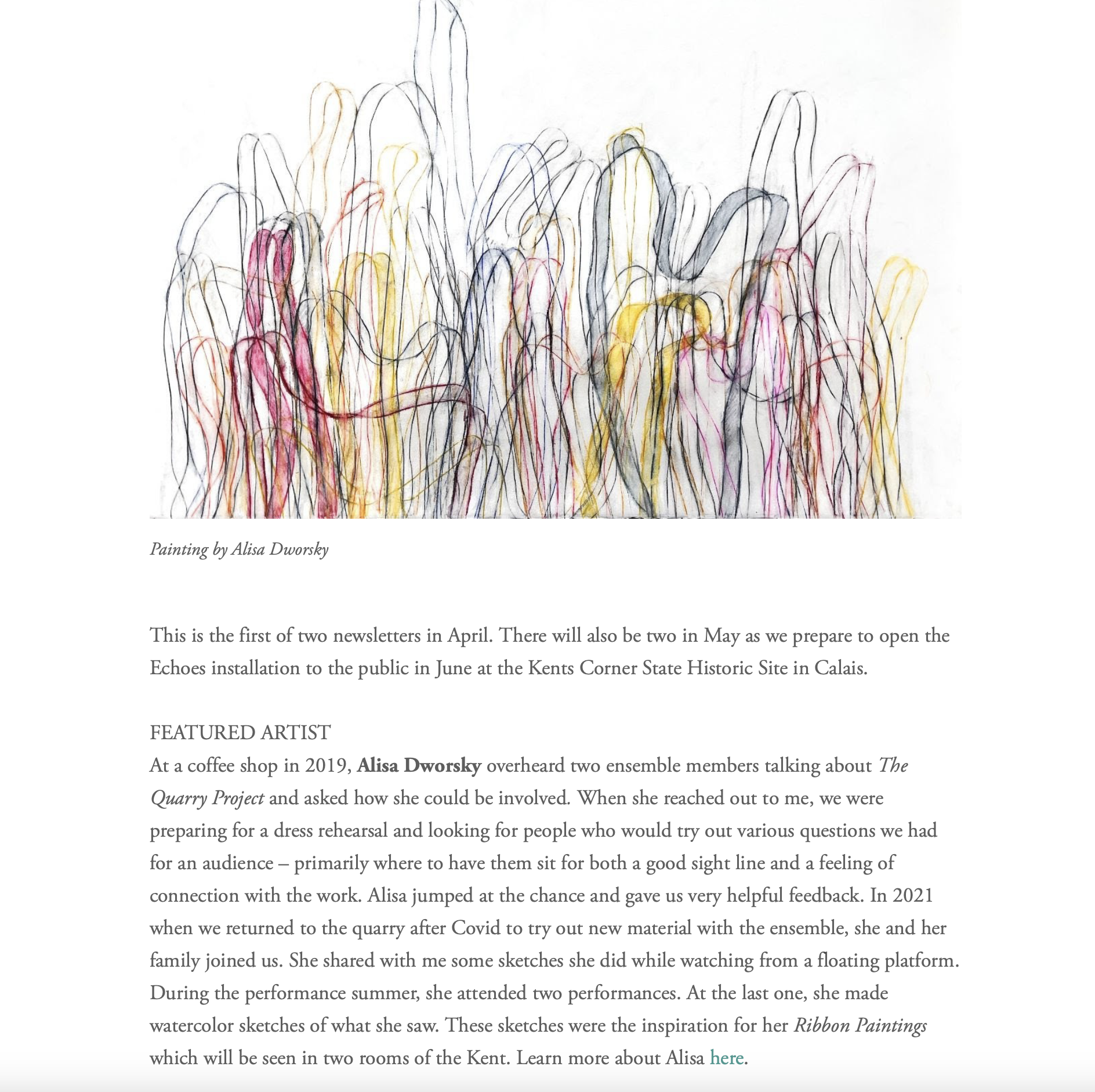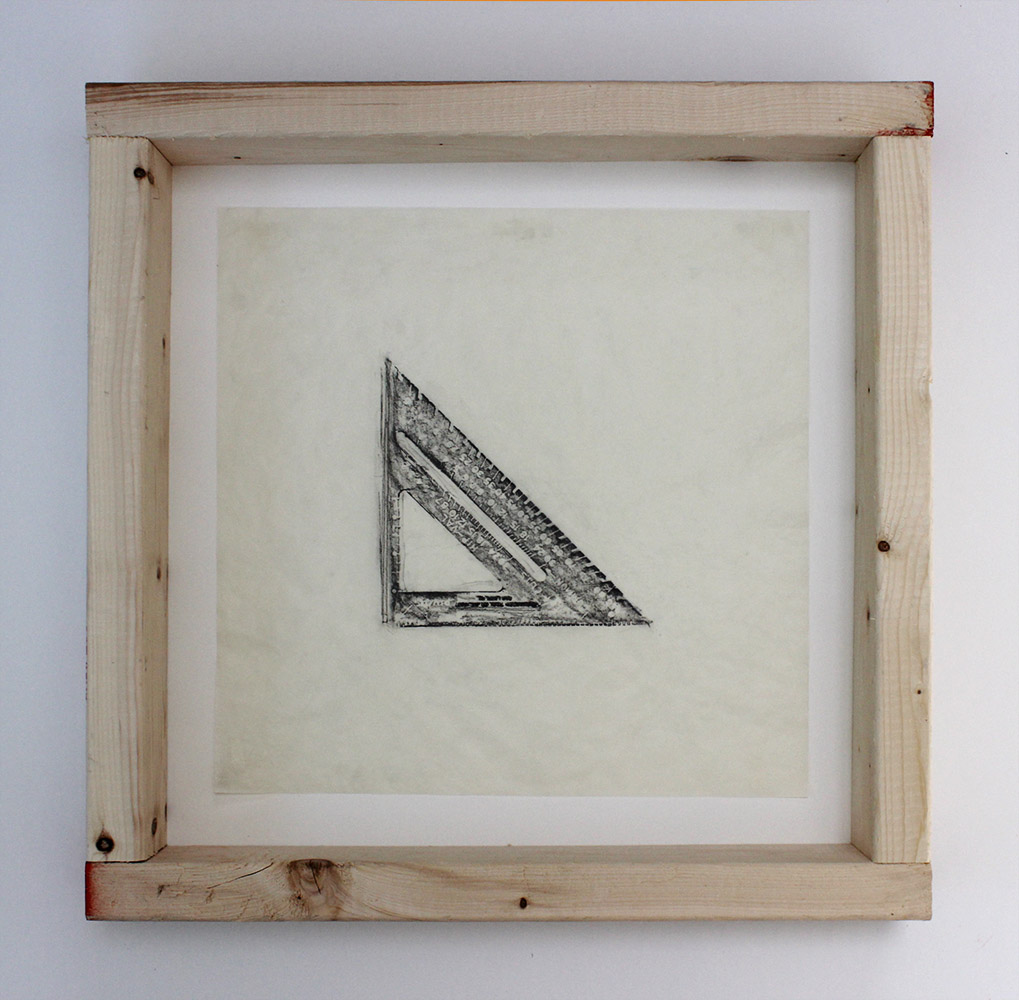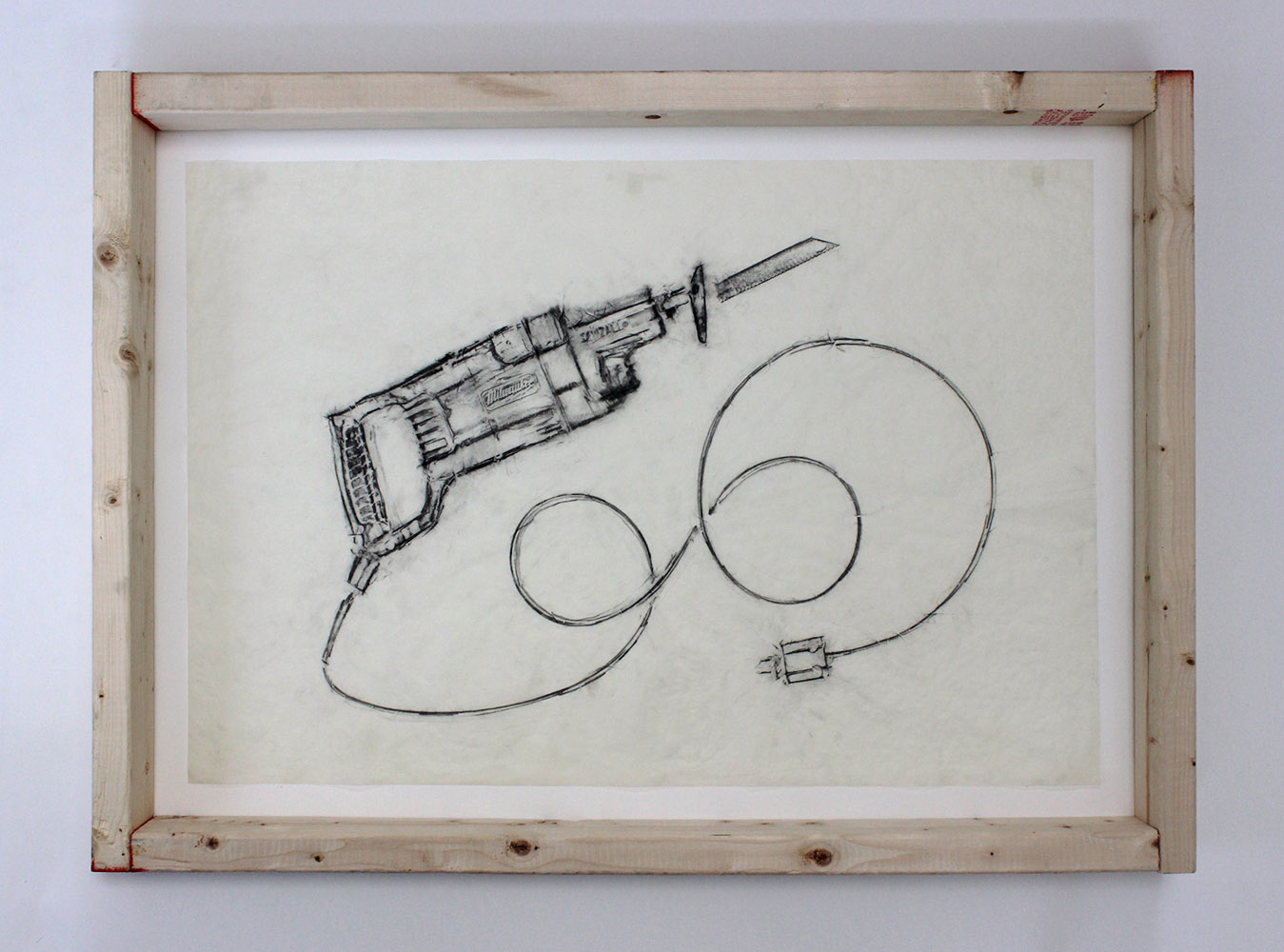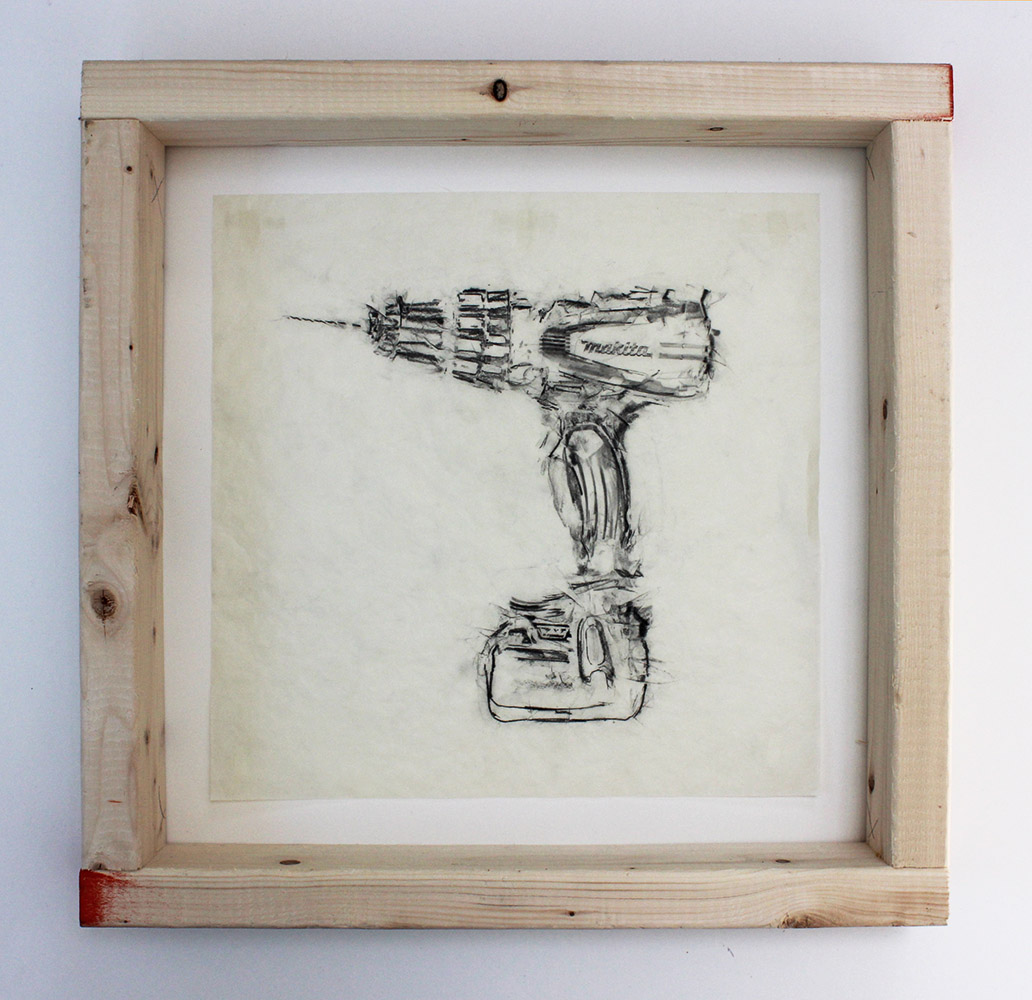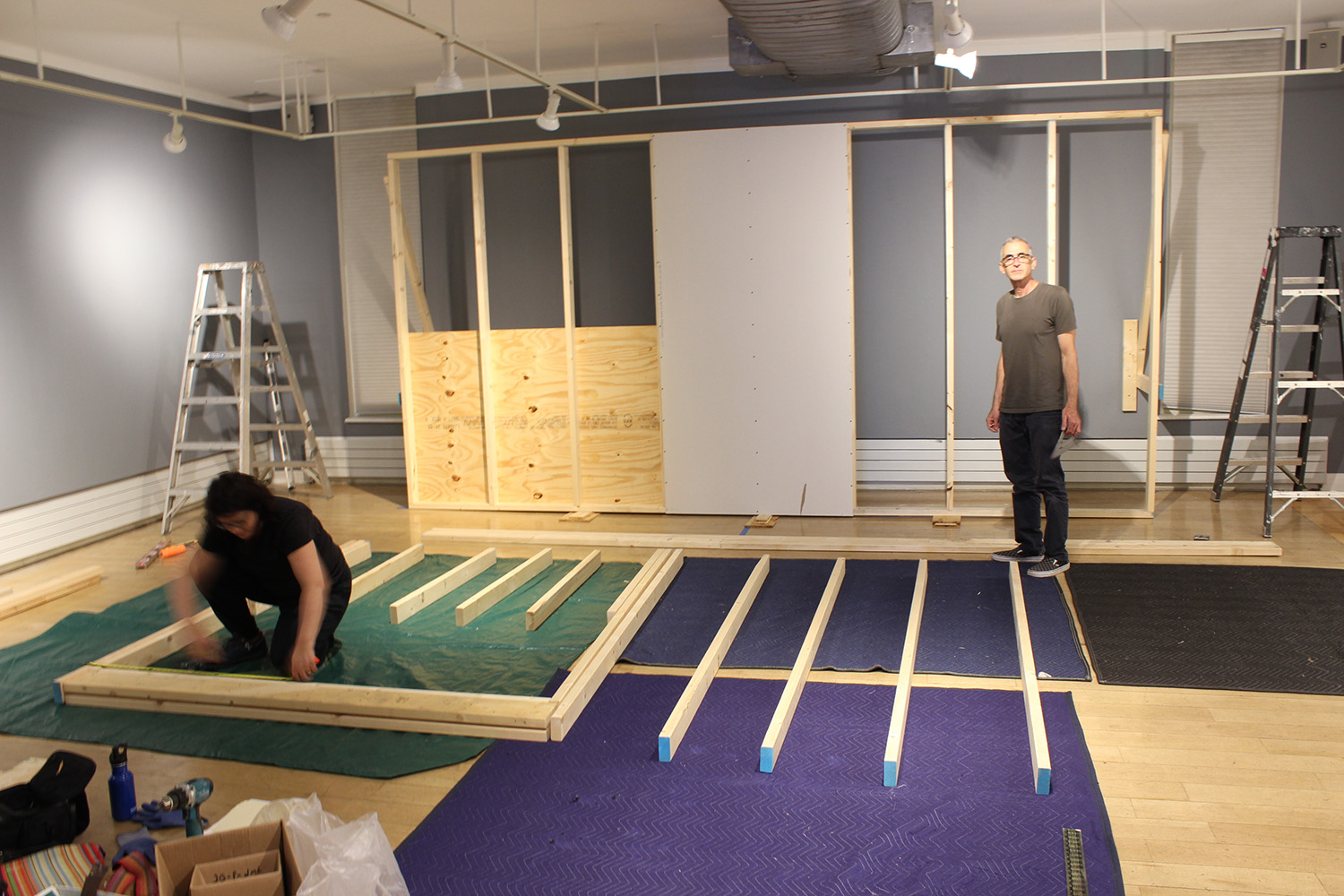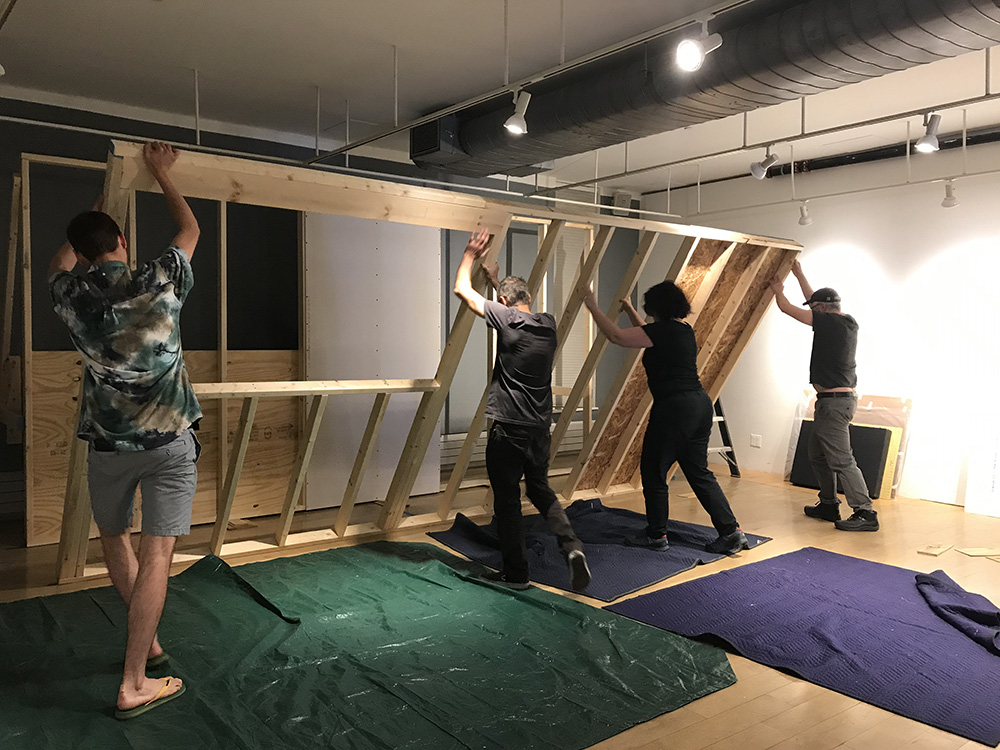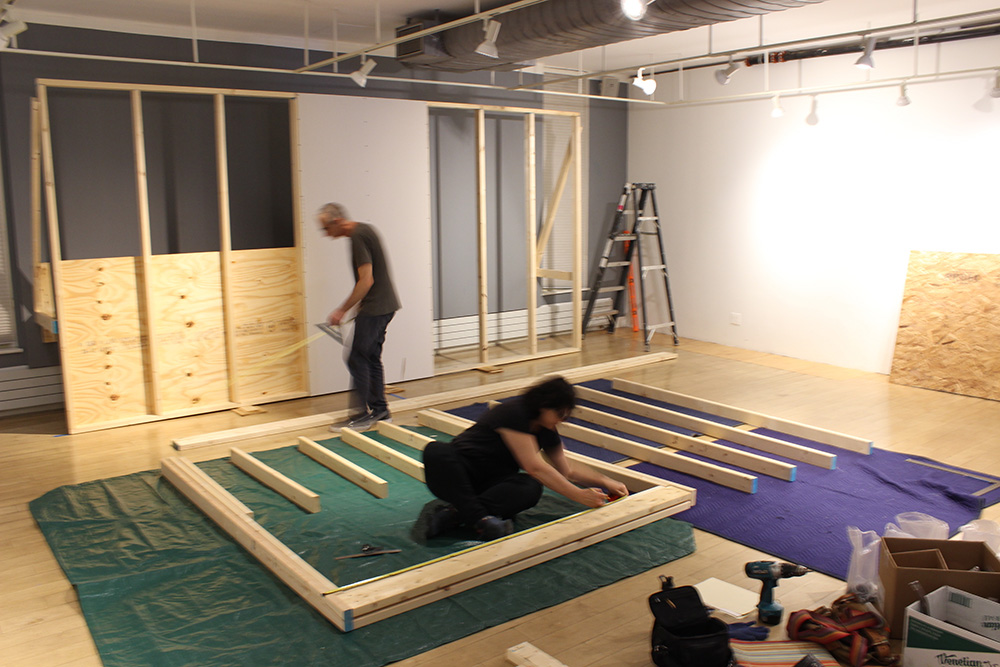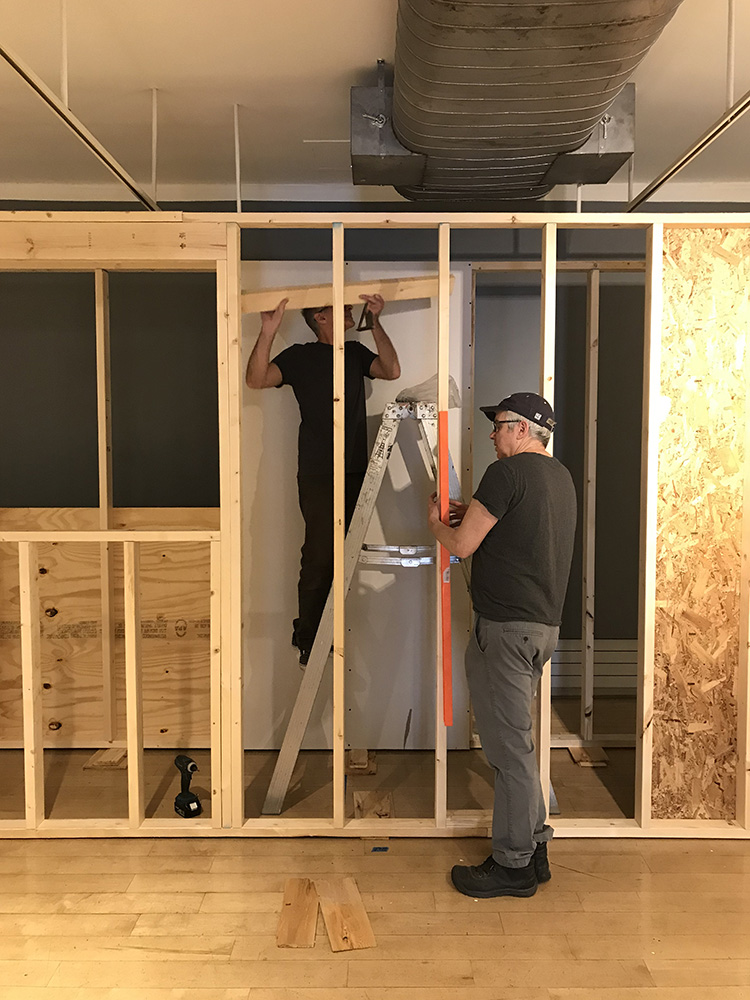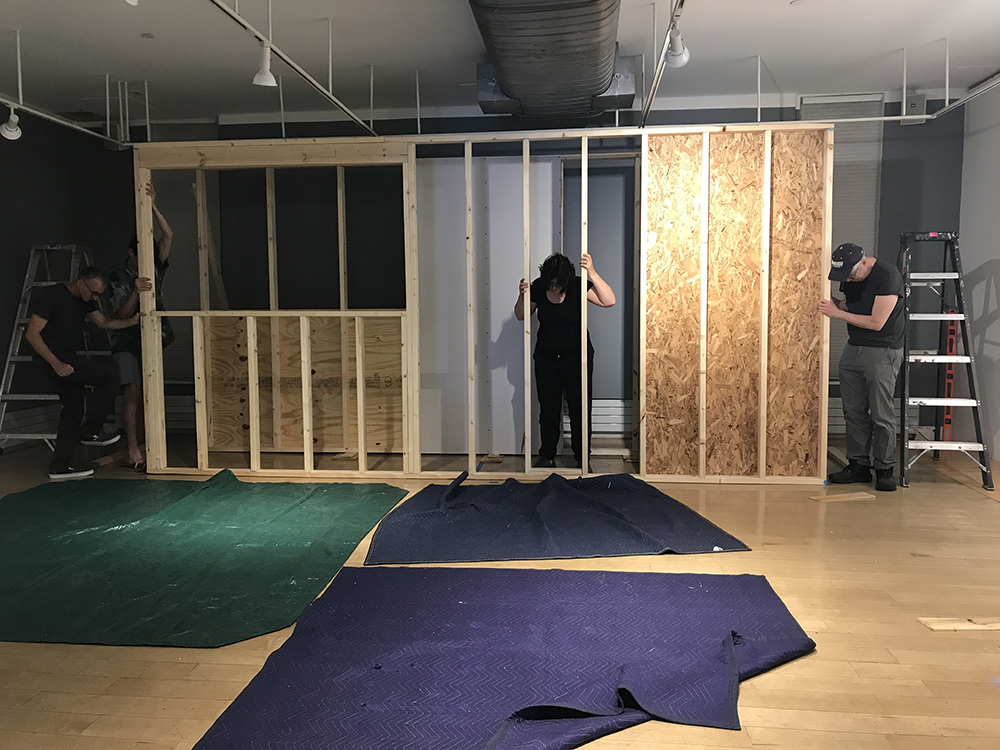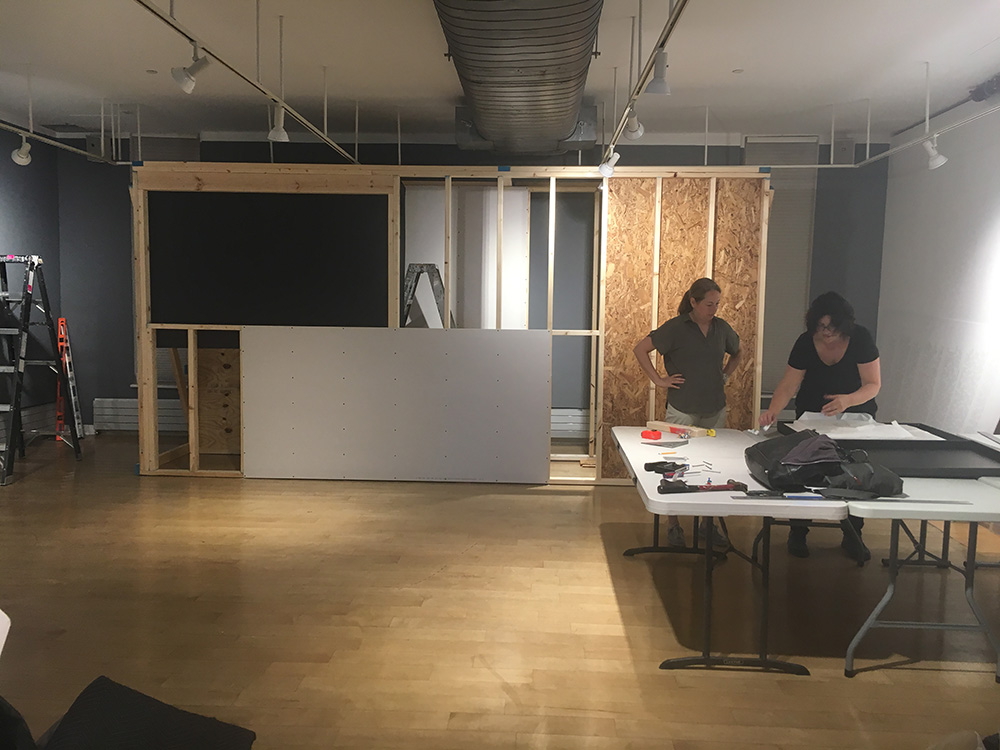Cristian Mariani, a philosopher of science and physicist, has used one of my prints as an image for a workshop at the University delia Svizzera Italiana . Mariana has previously used various images of my artwork to illustrate his ideas. Mariani wrote of my artwork ,
“I think on a very intuitive level, you were able to represent the thought that the microscopic world is fundamentally not determinate. I don't know if that was your aim, but that's definitely what your work represents for me. This idea of indeterminacy connects nicely to my philosophical work on quantum theory.”
Amy Lily , in SEVEN DAYS, Reviews my Solo Show at Vermont Supreme Court Gallery
please take a moment to watch my artist's talk for my Solo show of drawings at the Vermont Supreme Court Gallery.
My solo show of drawings at the Vermont Supreme Court gallery through September 29th_open M-F, 8:30 am- 4;30 pm.
I'm working on a new series of drawings for my upcoming solo show at the Vermont Supreme Court Gallery, Montpelier opening early July.
This is the latest drawing from my “Fold” series, created using a frontage method.I am taking rubbings of ribbon here with colored pencil and graphite. In this particular work I use less erasure than I have in previous drawings in this series.
Fold 13, 2022. 38” X 50” Graphite and Colored pencil on Paper
Interpace Opens as part of the The 7th Annual Art Prospect festival based in St Petersburg Russia
During this time of Covid-19, we’ve been conducting most of our activities within our homes. The question of this era: how can we establish a connection to our community, to the outside world, from within the confines of our dwellings? Our Installation “Interface” is a video record of materials and objects from within our house, projected onto fabric-skinned tetrahedral forms located on our front porch.
The triangular fabric surfaces of the installation amplify and fragment the images from within the dwelling. We organize the sequence of objects in a loose chronology that follows our engagements with the spaces of our home throughout the day.
In any period, particularly in the age of pandemic and social distancing, the front porch serves as an interface between the private realm of an individual or family and their community. It is the space of dialogue between the private and the public. For this reason, we are locating our installation, “Interspace”, on our wooden porch in Northern New England.
Our intervention is a structure of five-foot-long wood dowels connected as tetrahedrons with surfaces of stretched nylon fabric, forms reminiscent of kites, solar sails, and geodesic domes. The primary feeling is one of lightness which contrasts with the traditional design of the neo-classical porch. In the placement of this multi-surface installation, our goal is to engage the viewer strolling by, acknowledge their shifting viewpoints as they move through space.
The opportunity to create this installation in Vermont, as part of an international exhibition, is a direct outcome of the pandemic crisis. This year, the Art Prospect Festival, which typically is located in St Petersburg, Russia is now including artists and sites throughout the world. The artworks in this exhibition are presented both in-situ, through a website, and artists are connected through on-line based discussions .
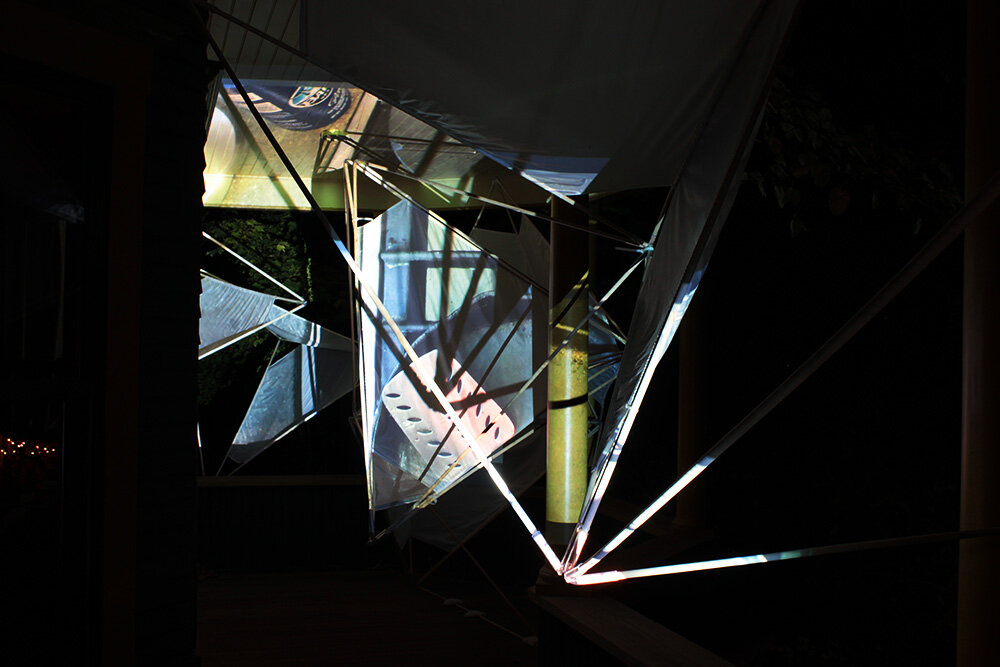


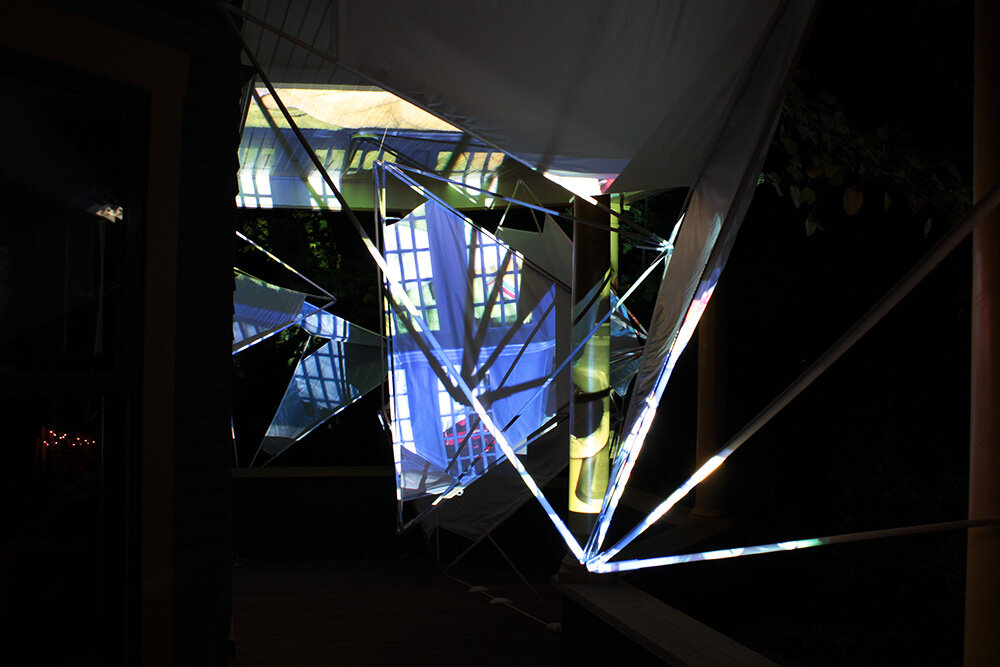
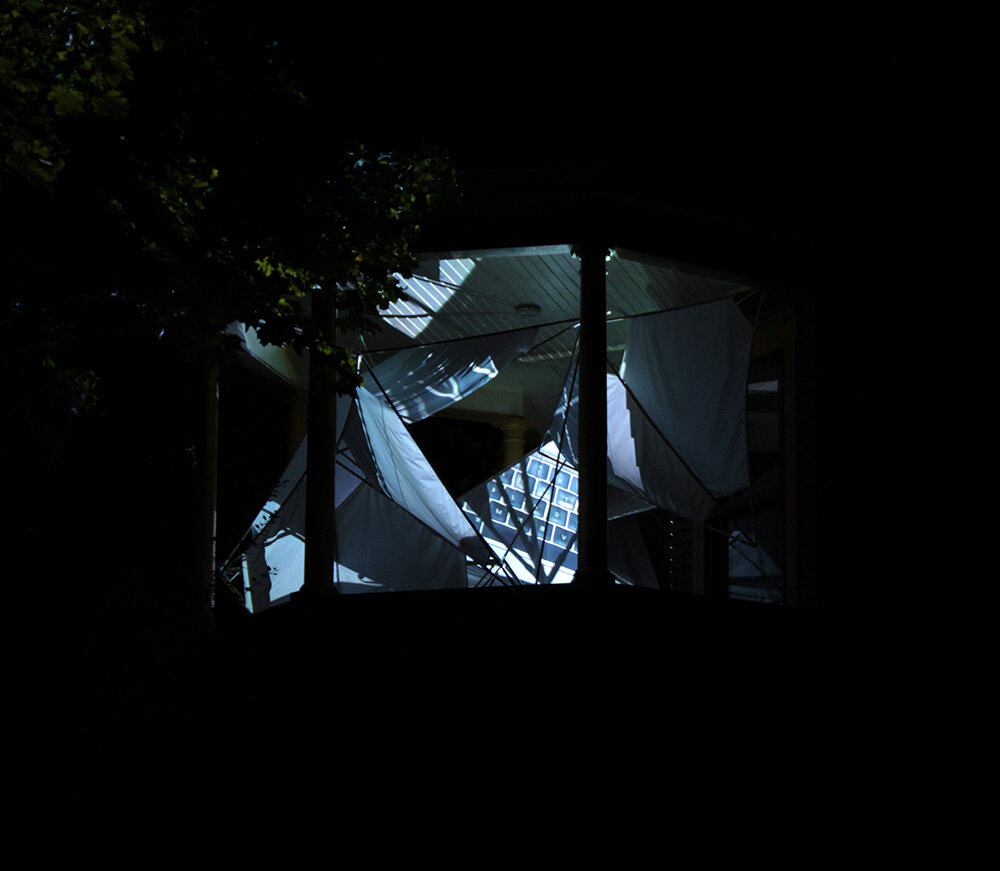
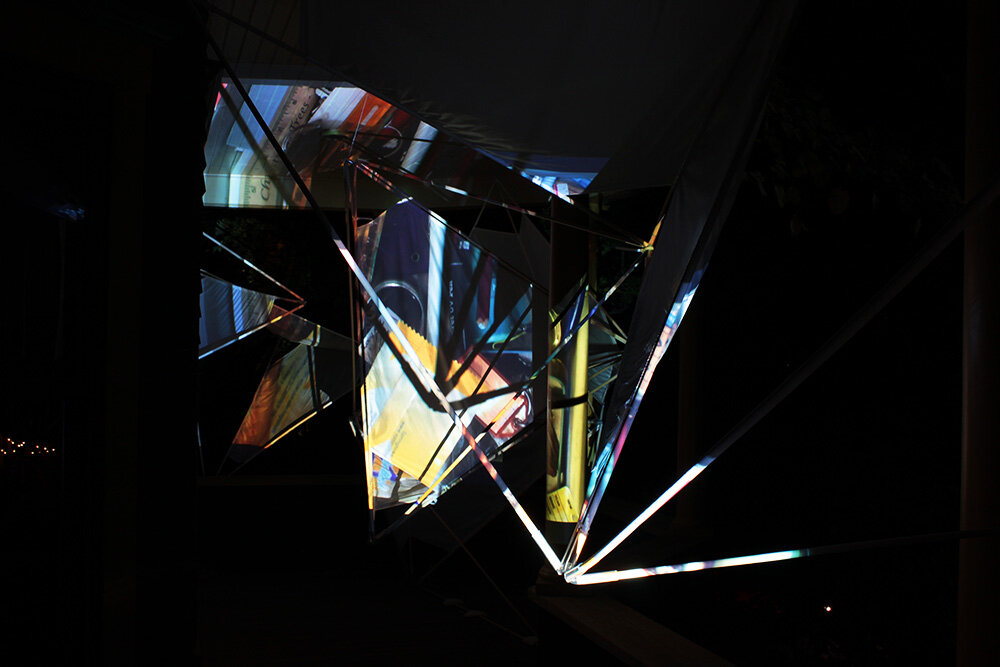
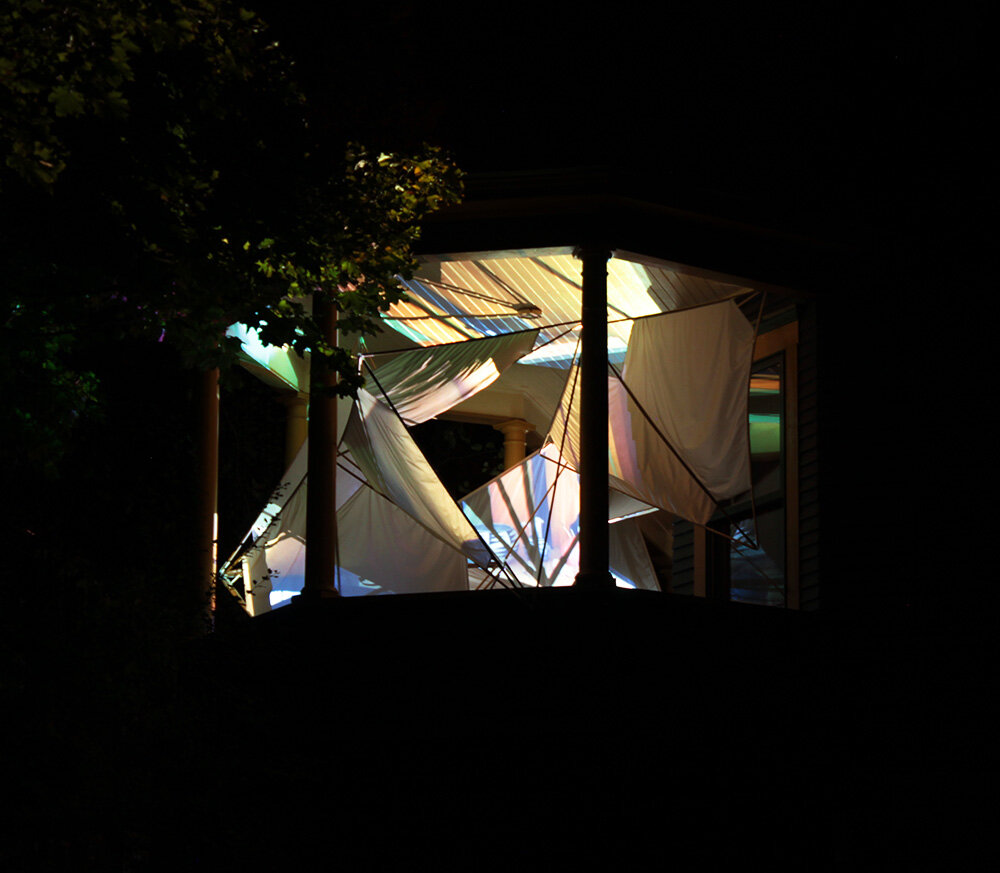

Opening Reception Tonight for "Job Site" at BCA (Burlington City Arts) 135 Church street Burlington VT
some images of the completed installation. I’m thrilled at how this new work has turned out. A wonderful collaboration with Bill Ferehawk.
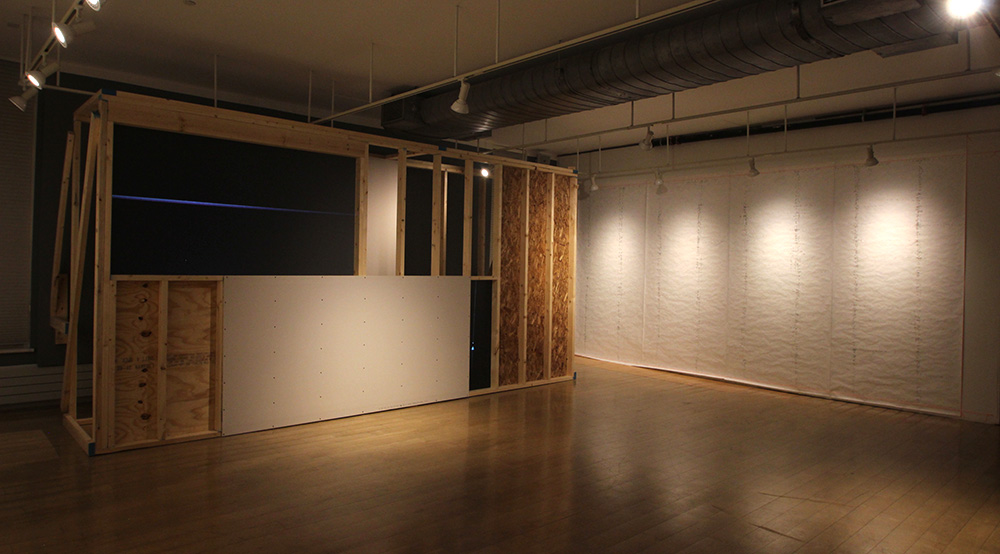
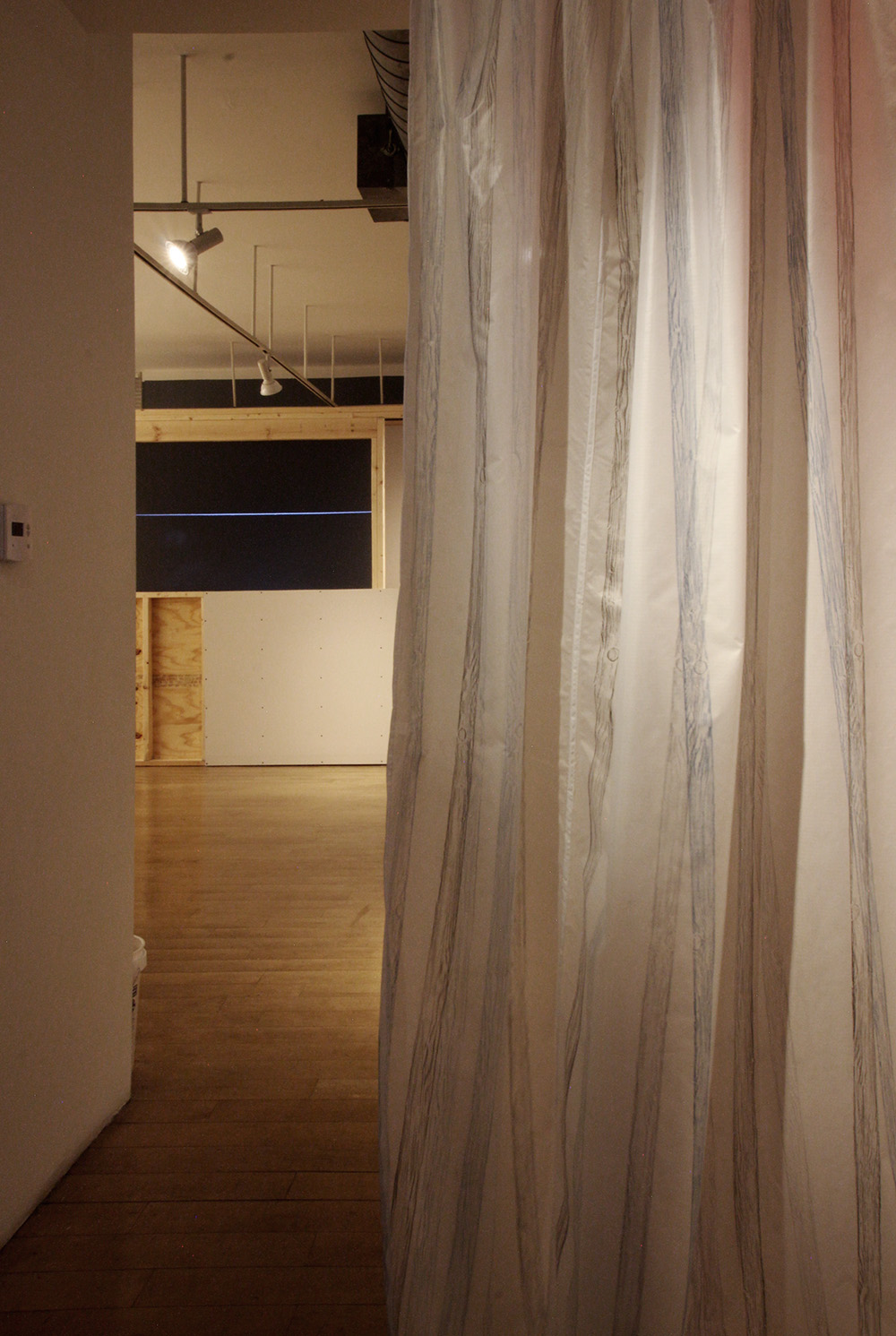
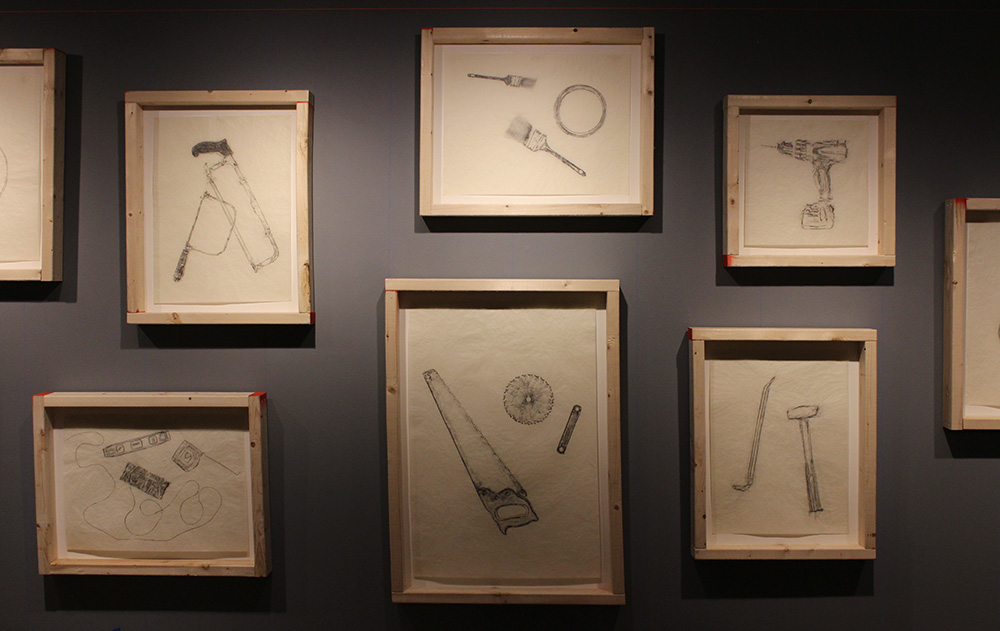
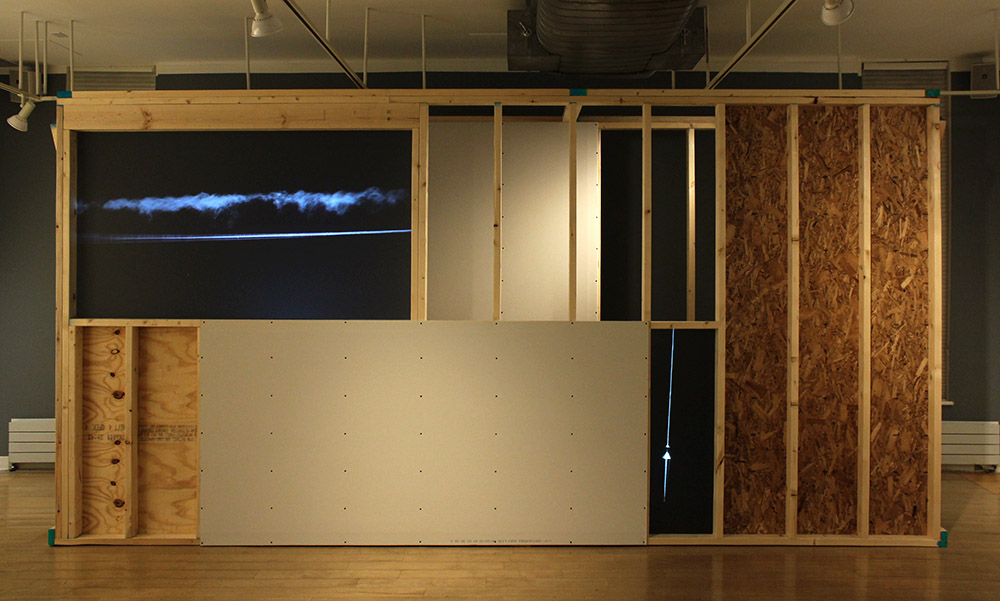
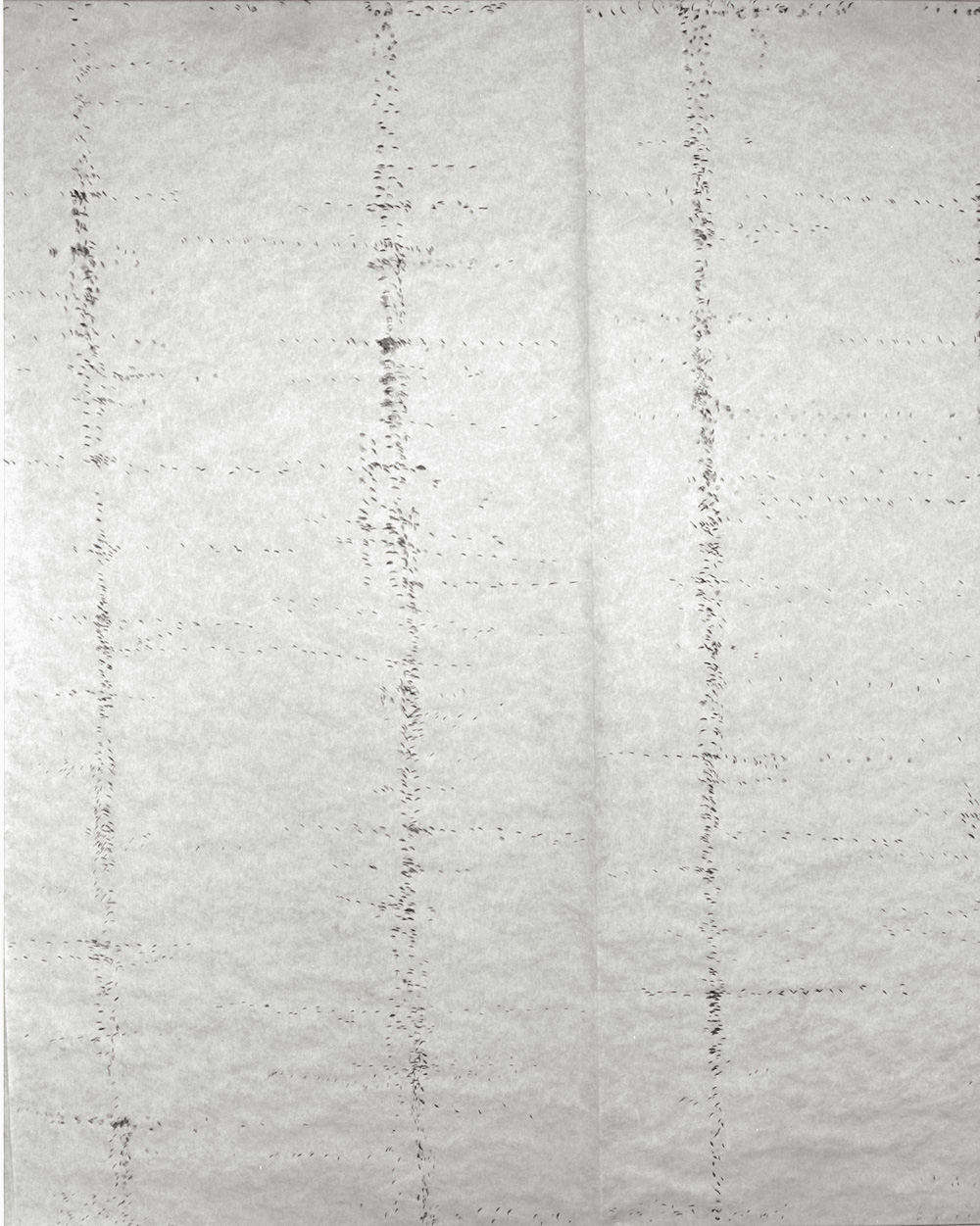
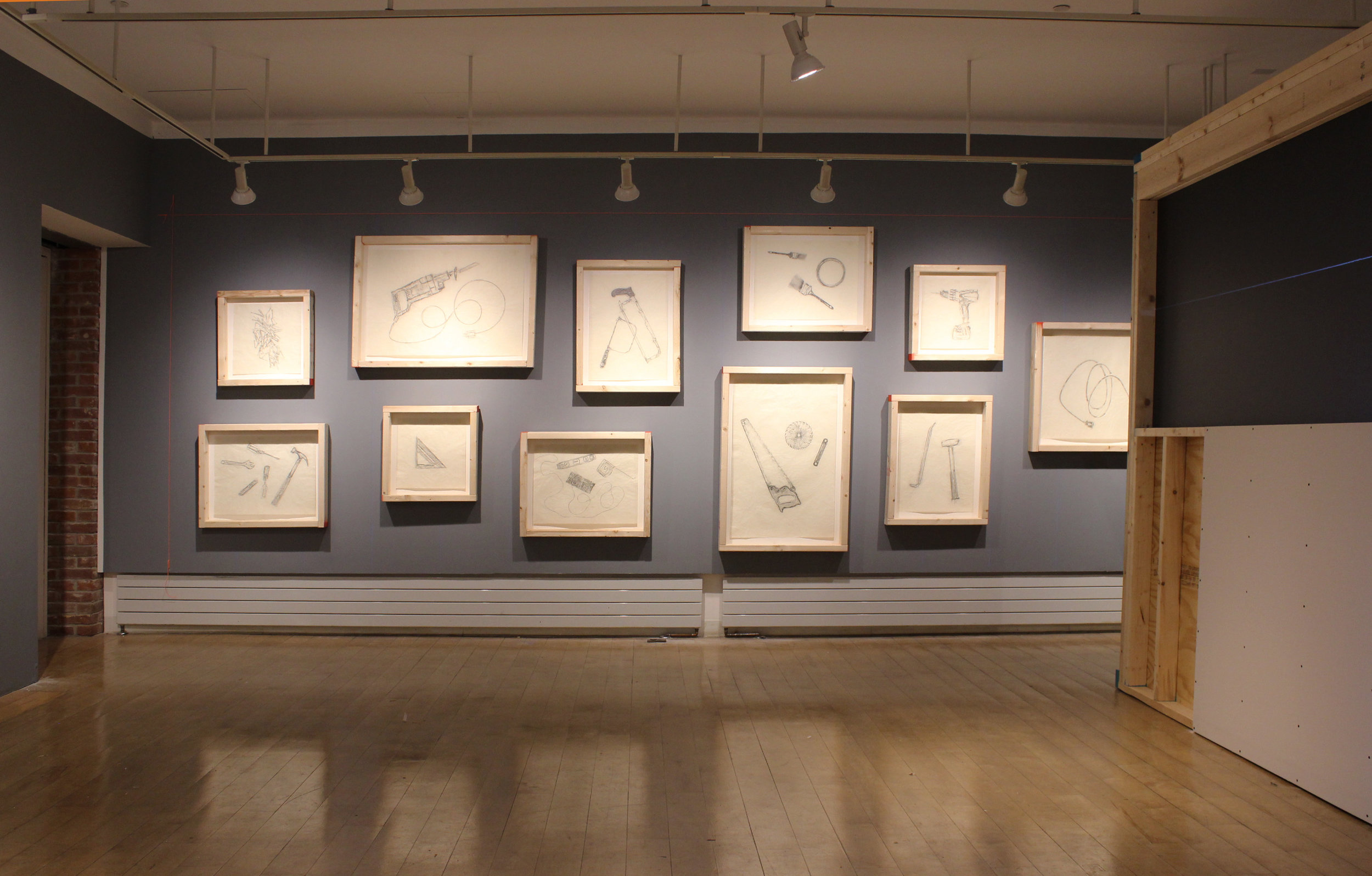
On Site construction has begun for "Job Site", at BCA center, Burlington City arts
Bill Ferehawk, my collaborator , arrived late Tuesday evening. We completed documenting works on Wednesday, loaded the car and by Thursday we were at Burlington City Arts. For two days we constructed the framed walls assembly;lage that will incorporate two video projections. With the help of my husband, Danny Sagan, and with an extra hand from BCA staff, we lifted the walls into place. Monday , June 17th, we resume our installation process and will be hanging the “Studfinder Drawings” as well as prepping the wall for the Frottage drawings of tools. Below some images of the Tool Drawings framed and a few process images.
Concept image for Job Site
Job Site Opens at Burlington City Arts, Burlington Vermont , Friday June 21 - October 6
here is a link to the BCA website
An exchange with BCA Curator Heather Ferrell about the installation Job Site
Responses from Alisa Dworsky[AD] and Bill Ferehawk [BF]
How did you initially meet each other and stay connected as you live/work on separate coasts?
[AD] Bill and I went to the Yale Graduate School of Architecture together. Bill was starting his second year when I arrived in the fall of 1988. It was a small program so we had quite a few mutual friends and we were soon introduced. I lived around the corner from the loft where Bill and his wife , Julia, lived. I would visit them often. Bill was an artist as well as an architecture student and I had just finished an undergraduate degree in painting and printmaking. We had much in common as we were each determined to keep working as artists while pursuing our architecture studies and practice. I remember Bill’s sculptures set up in his loft. It may have been at Bill’s recommendation that I took a class with Alice Aycock, who was a visiting professor teaching sculpture at Yale at the time. Alice remained an important mentor to Bill.
We always stayed connected over the years though while we were raising our young families there wasn’t much opportunity to visit with each other in person; after Architecture School, Bill and Julia returned to California and my husband I moved to Vermont.. We would see each other on the few occasions I was in California ( we once went for a weekend with our families to see San Simion, on the California coast north of LA, a Hearst estate designed by Julia Morgan). Bill started SMIBE several years ago, a festival focused on films about the built environment. He asked my husband, Danny Sagan, and myself to be on the jury. Over the years we continued to regularly share news of our projects with each other.
What inspired you to conceive of and collaborate to create Job Site?
Was there a key event or conversation that brought you together?
Can you describe your creative process over the past year that led to Job Site?
How did you work together?
About three years ago Bill mentioned that he’d really like to collaborate on an art project if the opportunity ever presented itself. So two years ago we started developing ideas for this installation. We started by trying to integrate some of my experiments with hammered drawings into a projected film project onto paper surfaces. With time , and many discussions and further experiments, we started to focus on the experience of building wood frame structures. The Yale Graduate School of Architecture was the first professional school of architecture to integrate a Design Build Program into its curriculum. Both Bill and I were deeply influenced by our experiences working as designers and building our projects with our classmates . Bill as I recall worked with his class on the construction of a Barn. I worked through a summer on the construction of a two family house-both projects were made of wood. Our professor and mentor was Paul Brouard who continued to teach Design -Build at Yale into his 80’s and only recently retired.
Bill and I share a deep respect for the experience of making things by hand. We recognize how much faster one can learn from this direct connection to making buildings but we also recognize that innovative uses of materials and deep understanding come from this direct experience as well. We love the opportunity to experiment with materials. Our common educational background, the values we share based on our early Yale experiences, and the iterative and site sensitive design skills that we learned in architecture school inform our approach to making art. All this serves as a bond that supports our fluid and easy collaboration.
My husband and I invited Bill to come to Vermont in the spring of 2018 to give a lecture at Norwich University at the Architecture School. This gave Bill and I the opportunity to work together in my studio over several days on this project. Since then we have been working together through phone text and email correspondence-often trading images and video clips several times a day. We make all our decisions together. One of us might mock up a study but then we review it together and give each other notes.
The graphite works on paper in the show came from a cross pollination of ideas and methods, each of us experimenting with materials and methods. Bill had seen my rubbings of ribbon, wire, rope and wood grain in my studio and was inspired to try making a rubbing of a hand tools. We immediately recognized how exciting these images were. And their relevance to the theme of building . The rubbings (frottage) of the tools were made by each of us. Bill was able to research , buy and send samples from LA of various kinds of Japanese paper. We selected a particular paper together, one that was thin enough to pick up subtle textures and also could be bent to adapt to the three dimensional profiles of the tools. Bill studied sumi ink methods of frottage but we ultimately determined that using graphite was the best approach for this project. We spent an intensive series of weeks , each making rubbings in our studios, sending images back and forth, inspiring each other to try new approaches,, and then editing together the collective options down to those exhibited.
How were the films created? (animation? Prep drawings? Steps in process) What are they meant to represent?
[BF] We started out with a number of 2D animations. These initial studies were digitally composites where Alisa made physical wall constructions out of paper, photographed them, and then I incorporated her stills with 2D animations. These initial moving images were based on building processes we thought were evocative of the process of construction: rolling on paint, snapping a chalk line, hanging a plumb bob, sweeping dust. There was a lot of experimentation, capturing different types of moving images. It wasn’t until we had the opportunity to work together in Alisa’s studio in the Spring of 2018 that we began to develop a more cohesive installation concept. We decided that the piece would be about mark making and movement in wood construction. Building on Alisa’s previous work, especially her frottage drawings, many ideas were discussed and tried. I have always felt that the integration of the moving image into a multimedia installation is always fraught with difficulties. We asked, “how would the moving image be presented in a way that felt natural to the medium and integral to the whole piece?” A wood frame wall, made up of many different sized rectangles, would be a natural place for the projected moving image.
We began looking at suitable subjects for a time based medium: procedures of construction that illustrated time and space. The swinging of the plumb bob, the movement of dust, and snapping a chalk line, all resonated with us. These were also construction practices that go back millennia, so there would be a direct connection to the origins of building. I suggested to Alisa that I wanted all of the moving images to be analog captures, without any animation. This would be honest to our idea of capturing real marks of construction. But from a technical perspective I had no idea how to actually film a snap line in the way we had imagined. I told Alisa it wasn’t possible. But, I began to experiment in my studio in LA. And after a number of studies, I discovered that this image of a snap line that we wanted, could in fact be captured. A high frame rate camera, allowed us to slow down time, giving the image that alternate time space that we wanted. By slowing the rate of motion in both the snap line and the plumb bob films, viewers see something ordinary in a new way.
What metaphorical significance does “mark making” embody in Job Site?
[AD] I approached building as though I was still a painter or a printmaker; I noticed the texture, weight and qualities of the materials, I understood the richness that comes from a layering of actions, I enjoyed the smell of the wood and the gestures that were part of construction . After being confined to a design studio in my first year of Architecture School, working with approximations of a building to represent my ideas, I was delighted to be in my design-build class, truly making again, on site and experiencing how my body moved in relation to the task at hand. In my experience, the swing of a hammer has more in common with hurling paint than it does with drafting.
When I built my first house in New Haven I was struck by the methods we used to transfer the scaled ¼” drawings we’d made onto the site at full scale. To lay out the foundation we set up batter boards and string - we literally drew the outline of the house in plan on the site. From those “lines”, those ephemeral marks (that would guide the excavation and placement of the foundation forms ), we extruded the entire structure. Two dimensions gave birth to three . I was amazed the something a complex as a building finds its origins as an onsite drawing.
Design-build teaches one that a building is made from thousands of rather straightforward decisions and actions. Its the accumulation that builds into the experience of volume and complexity . Inversely, one can breakdown the process of making abuilding into fairly simple materials relationships and actions. In this project we are celebrating some of these basic actions , material assemblies and marks. The hammer marks, the chalk lines, the pencil notations used to determine where one cuts, all these marks are eventually covered up as the building is “finished”. To reveal them, to celebrate them is to celebrate the processof making . To celebrate the residual marks and the tools used in construction is to acknowledge the builders. The job site has its beauty; the marks , while functional and residual are none the less essential.
Why is it important to connect viewers with the “visceral nature of building?”
How is this idea relevant today?
[AD] We most often experience our buildings, our architecture, as vessels of comfort, prestige and accommodation of our needs. Surfaces are highly refined. Architecture performs for us. Preceding these curated experiences is a the experience of the job site. This is a site where humans have to engage with each other and with materials with an acute awareness of how they move. Two people carrying a piece of plywood is its own marvelous dance. To place a ladder is an act of choreography. To snap a chalk line is to release sound, color and order in one moment. The plumb bob is solid and cold in the hand, restless on a string, direct and useful in its beauty. The smell of cut wood is a perfume. The vibration of the Sawzall numbs ones hands. The dust catches the light shining through the framed structure. All this is relevant today because :
1. We need to appreciate the building experience that scaffolds the designed/refined world we inhabit.
2. We need to get out from behind our screens and activate all our senses by learning from making.
3. We need to experience that which is covered up.
How does collaboration inform your creativity?
[AD] I have always believed that inspiration and innovation are cultivated by working across disciplines whenever possible. Collaborating with Bill has taught me about the parameters of film, even when it is used as a component in an non narrative assemblage. Collaboration gives one access to a much broader set of skills and considerations.
Did Job Site impact the direction or shape of your individual separate artist practices? How so?
[AD] Much of the influence of Job Siteon my practice remains to be seen. Job Sitecertainly reinforced for me the gifts of collaboration -the companionship, humor, opportunity to articulate ones intentions at frequent intervals, the power of surprise… the recognition that the other member of the team serves as a catalyst to travel beyond ones preconceptions and into a new realm of exploration.
My work on exhibit at Bennington Museum, Bennington vermont through December 28th
This table, “Acerframe”, created with Danny Sagan for the exhibit “Peace Love Harmony: 1960’s Vermont” at the Bennington Museum, 75 Main St, Bennington, VT 05201. A shout out to Paul Wallich for his help prototyping the laser cut nodes.
Local vermont Maple, Delrin(plastic) laser cut connectors, Tempered Glass Top, Steel Hardware.
My Drawings at the Vermont Arts Council's Spotlight Gallery through December 28th.
Two of my “Fold’ series drawings are in this group exhibit “Seven Women, Seven Walls”. 136 State St, Montpelier, VT 05602 M-F ,9 am- 5pm. more info HERE
Fold 4, Graphite on paper, 32” X 50”
I am Curating Sculptfest2018 at The Carving Studio and Sculpture Center
The theme of the exhibit is "Interdependence" . I have included a text description of my call to artists for this exhibit below. The opening of this exhibit is Saturday September 8th, 5-8 pm. open to the public. There will be a site specific performance/Installation by Amy Königbauer the evening of the opening. There will be a sound pice by Charles Hickey performed as well in one of the quarries. There will be refreshments and music. This event is open to the public.
See this great preview of the exhibit by B. Amore in Art New England
Interdependence reflects a form of symbiosis, the interaction between two or more elements for the benefit of all. Interdependency is a state of mutual support.
The concept of interdependence can serve as a lens to understand the relationships within natural systems and between people, industries, nation-states, structural components and abstract forms. The modern era is defined, in part, by an increase in interdependency. As our technologies, economies, and cultures have evolved they are more apt to be tied to complex systems of mutual reliance. We have always been in a state of interdependence with our natural systems. Within many fields of study, we examine the interdependence of factors that drive outcomes.
Within the field of art and the practice of art it is useful to ask in what ways our practices are dependent on the work of other artists or other works of art. How are we influenced and inspired by fellow artists? How do we in turn support others? What other systems of mutual support drive creativity? Nothing we achieve is accomplished alone.
The Carving Studio and Sculpture Center occupies a site shaped by an industry’s need for the marble below the surface. The transformation of this defunct quarry into a thriving art center reflects a web of supporting relationships, not least that between the art exhibited and the site. How does the site impact the art made and exhibited here and how does this art shape the way we understand, move through and experience this place?
My Installation "InVersion" is up through March 17 at Cynthia Reeves
image below of the installation with drawings in the gallery space. more information at www.cynthia-reeves.com
My Solo Show at Cynthia Reeves on MASS MoCA Campus opened today
The show remains up through March 10. More info at www.cynthia-Reeves.com
My upcoming Solo show at Cynthia Reeves! Come join me.
Also here is link to the press release for the show
and the catalogue for the exhibit
Solo show of Drawings and Installation at Cynthia Reeves, MASS MoCA campus
My drawings with Cynthia Reeves at PALM BEACH MODERN + CONTEMPORARY Art fair
My drawings are part of this group exhibit with Cynthia Reeves.
Stop By. BOOTH PB335 Jan 11-15, VIP preview Jan 7. contact: info@cynthia-reeves.com
West Palm Beach, FL
825 S Dixie Hwy at Okeechobee Blvd
My Drawings with Cynthia Reeves at Art Miami Dec 5-8
Entwine 8, 50" X 38", Graphite on Paper
Preparing for my Solo Show at Cynthia Reeves on the MASS MoCA campus, Feb 3-March 10
An example from a new series of drawings that I am making for the exhibit.
Untitled, 50" X 38", Graphite on Paper, 2017

